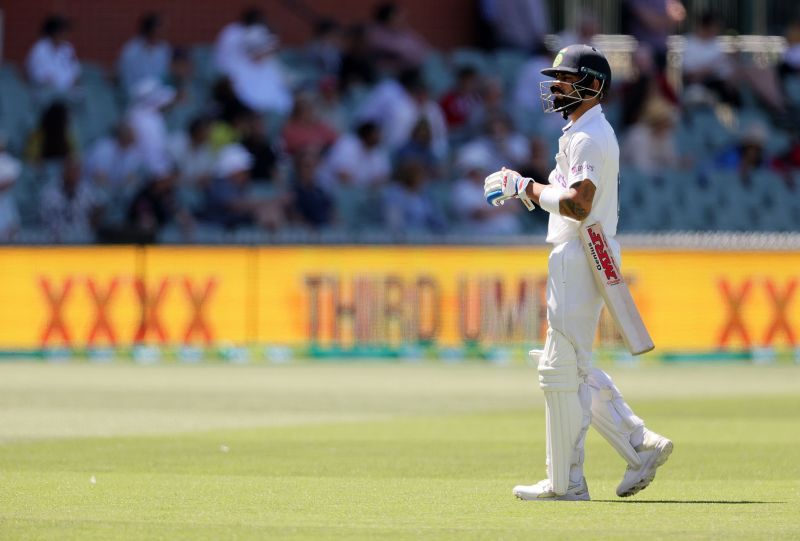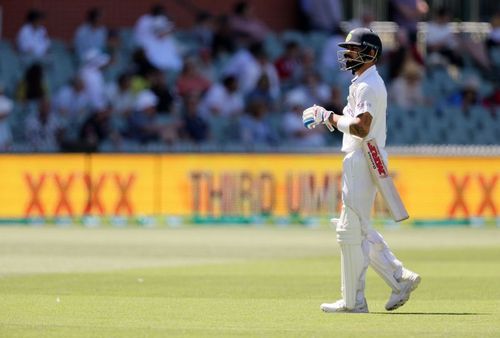
Indian cricket team and England seek to embrace newer horizons

A couple of months ago, under the blazing South Australian sun, the Indian cricket team succumbed to their lowest trough in Test cricket – one that was compounded by the scenery of it being a pink-ball Test.
Though the Indian cricket team emerged from that dark tunnel with their pride relatively intact, that defeat at Adelaide was a considerable blot on what was an otherwise spotless summer Down Under.
More importantly though, the result stoked the discussion of the Indian cricket team having not played enough Day-Night Test cricket, despite being the pioneers of the modern game. To put things into context, the Indian cricket team have only played two pink-ball fixtures so far – a number that dwindles in comparison to the likes of Australia and New Zealand.
In fact, even Pakistan have played more of such encounters, thereby highlighting the slight aversion the Indians have had to the proposed renaissance of Test cricket.
Yet, with Sourav Ganguly at the helm, that resistance has mellowed down, meaning that the Indian cricket team agreed to play a Day-Night contest Down Under – just a year after making their debut against Bangladesh at the Eden Gardens.
Thus, under normal circumstances, the Indian cricket team would be termed an underdog in such games, not just because they are relatively new to pink-ball games, but also because the dynamics get altered significantly.
Additionally, the nature of the pink ball, which boasts more lacquer, diminishes the margin for error for the batsmen. This, considering that it tends to extract more assistance for fast bowlers, even off docile surfaces.

Indian cricket team will play their 3rd Day-Night Test against England
Fortunately for the Indian cricket team though, as they prepare to embark on their 3rd Day-Night adventure, they confront an English side that is perhaps just as inexperienced. For the record, the Three Lions have only participated in 3 such Tests previously – again, a tally that falls shy of what one would’ve envisioned from an elite Test outfit.
Rather eerily though, much like the Indian cricket team at Adelaide, England have also endured an annihilation at the pink ball’s expense. For the uninitiated, that took place at Eden Park in 2018, when New Zealand shot out the Three Lions for 58 in the latter’s first essay.
Consequently, it seems that the scales would’ve been balanced, considering the Indian cricket team and England are about to venture into the most mysterious of unknowns. That it comes in the middle of a series where pitches have dominated the headlines and the term “home advantage” has been thrown around like a frisbee, only adds to the intrigue.

Contextually, a tussle between the Indian cricket team and England should involve conversations about the myriad match-winners on display, whether it be Ben Stokes, Joe Root, James Anderson, Ravichandran Ashwin, Rohit Sharma or of course, Virat Kohli.
Also Read: Virat Kohli fires ominous warning shot ahead of pink-ball Test
Yet, for a rubber of such magnitude, it seems a travesty that the attention has centred around the strips on offer, instead of the bits of brilliance that have been on display.
Hence, on that front at least, there might be a lot more to discuss when the Indian cricket team and England clash swords under the remarkable glaze of the LED lights at Motera. In blunter terms, there are simply too many interesting narratives for one to keep harping about pitches.
After all, for both the Indian cricket team and England, the surroundings would seem as alien as humanly possible, wouldn’t it?
For starters, there has been no international match at Motera, since it was rebuilt into a much larger facility. Though there have been a few domestic T20 matches at the venue, there is no clarity on how the surface would play out.
Moreover, with the 3rd Test being a pink-ball fixture, there is ample room for dew (another hotly debated topic) to enter the fray. In most previous Day-Night fixtures, that hasn’t particularly been a sticky point. However, in a country like India, that too in the month of February, it would be naïve to not expect it to be a factor.
If the above does materialize, it might throw all calculations out of the window, for the pink ball, which is supposed to swing and seam, would not do so. As far as reverse swing is concerned, that could be another conundrum.
Prior to the Test, James Anderson opined that there might not be a lot of reverse swing on offer. However, he said so with an asterisk, maintaining that the character of the ball could change if the surface is abrasive enough.
Apart from the aforementioned, there is also the small matter of both teams handling the twilight period – a phase that incessantly tests the technique and the mental toughness of batsmen. So far, in Day-Night games, teams have preferred to bat in the afternoon before letting the fast bowlers do the damage under the lights. But, at this juncture, it remains to be seen if those traits rear up at Motera.
Consequently, one might wonder that both teams, especially in light of their sojourn into unchartered territory, might not have a distinct advantage over the other. On the flip side, it also means that neither would have major flies in the ointment to worry about.
More fascinatingly, both teams are rummaging for the ideal modus operandi. Yet, neither seems as seasoned as they would've want
In turn, the aforementioned also means that the Indian cricket team and England would seek to embrace these newer horizons and forage for perfection, through the glorious imperfections that a venture into the unknown brings.
For the neutral, the pink-ball Test perhaps arrives at just the right time, for it reduces the potential chatter about the uncontrollable and plunges the Indian cricket team and England into an entirely different continuum, wherein precedent might count for nothing and sheer skill takes over.
The fact that there isn’t a lot of precedent complicates matters as well as simplifies them, considering that both outfits might not fret over things that should be termed conjecture. Instead, the Indian cricket team and England can focus on each dimension as it comes, away from all the tons of piled up data.
Over the past few years, cricket has veered towards statistics and match ups quite a bit. So much so that plenty have forgotten that it remains a sport where the ability to adapt and street-smartness are paramount.
In fact, to that end, perhaps the Day-Night fixture serves as the rekindling of Test cricket as it should be – full of ebbs, flows and hidden challenges. After all, that was what it was meant to do anyway, wasn’t it?